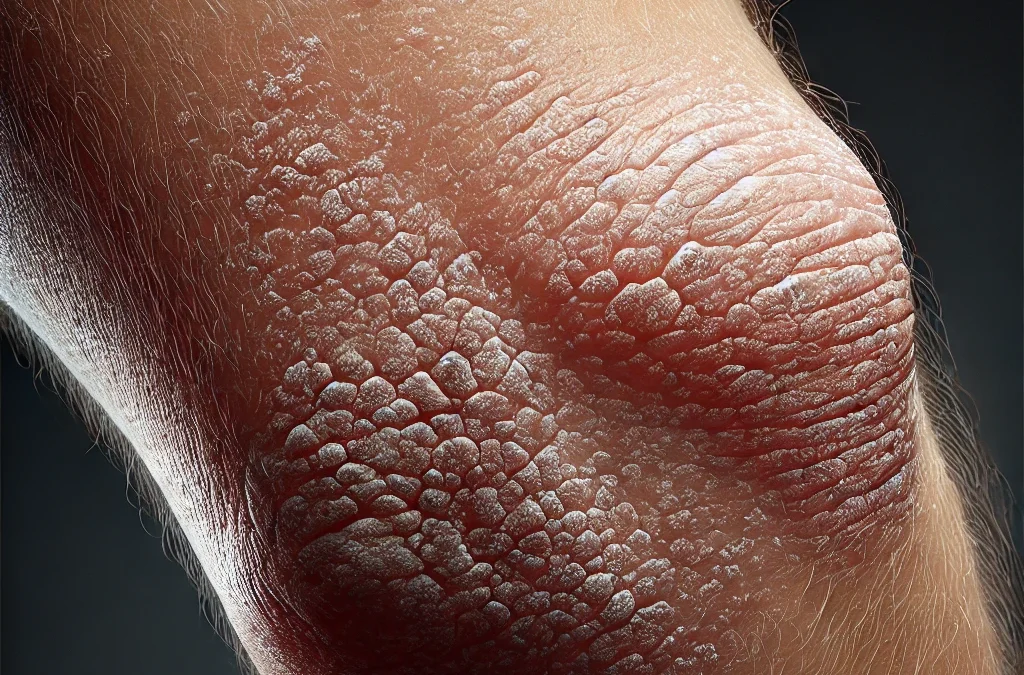The article reports on the findings from a Phase 2 clinical trial that investigated the effectiveness of Deucravacitinib, a selective Tyrosine Kinase 2 (TYK2) inhibitor, in reducing pain in patients with active Psoriatic Arthritis (PsA). PsA is a chronic inflammatory disease that commonly causes joint pain, stiffness, and swelling, significantly affecting patients’ daily lives and overall quality of life. The study focused on how Deucravacitinib impacted pain, which is a key symptom for PsA patients, and explored differences in pain relief between male and female participants.
Background:
Pain in PsA involves complex pathways, including the activation of certain cytokines, many of which are mediated by TYK2. Deucravacitinib is an oral, first-in-class selective inhibitor of TYK2, which is known to interfere with these cytokines involved in PsA. Deucravacitinib has already been approved in several countries for treating moderate to severe plaque psoriasis, and previous trials have shown it to be effective in treating PsA. The purpose of this study was to assess its effect specifically on pain outcomes in PsA patients and to explore how pain reduction correlated with improvements in overall disease activity.
Methods:
A total of 203 PsA patients were enrolled in the study and randomized into three groups: one group received a placebo (PBO), one group received Deucravacitinib 6 mg once daily, and the third group received Deucravacitinib 12 mg once daily. The study lasted for 16 weeks, and pain was evaluated using three different instruments:
1. Patient Global Assessment of Pain (Pain VAS) – This tool asks patients to rate their pain on a scale of 0 (no pain) to 100 (worst pain possible).
2. Psoriatic Arthritis Impact of Disease (PsAID) pain instrument – This measures pain on a 0 to 10 scale, with higher scores indicating more severe pain.
3. 36-Item Short Form Survey (SF-36) Bodily Pain questionnaire – This section of the survey asks patients to rate the intensity of their pain on a scale ranging from “none” to “very severe.”
In addition to measuring pain levels, the study also looked at the relationship between pain scores and overall disease activity, measured by tools like the Psoriatic Arthritis Disease Activity Score (PASDAS) and the Patient Global Assessment of Disease Activity. Changes from baseline (the patient’s initial pain level before starting the treatment) were recorded, and improvements were compared between the placebo and Deucravacitinib groups.
Results:
At the start of the study (baseline), patients reported an average Pain VAS score of 64.1 and a PsAID pain score of 6.4, indicating a moderate to high level of pain across all groups. These scores were similar among patients in the placebo and Deucravacitinib groups, ensuring a fair comparison of treatment effects.
Over the 16-week period, patients taking Deucravacitinib (both 6 mg and 12 mg) showed significantly greater improvements in pain compared to the placebo group. These improvements were evident in all three pain measurement tools. Specifically:
• Pain VAS and PsAID scores: Patients on Deucravacitinib reported a more substantial decrease in their pain scores compared to those on placebo.
• SF-36 Bodily Pain: Similarly, patients on Deucravacitinib reported that their pain severity decreased more significantly than those taking the placebo.
Additionally, the study found that pain assessments were strongly correlated with the overall disease activity scores (like PASDAS and Patient Global Assessment of Disease Activity). This means that as patients’ disease activity improved, their pain levels decreased, supporting the idea that Deucravacitinib helps manage not just the pain but also the underlying disease process in PsA.
Interestingly, both male and female patients experienced similar levels of pain relief, and there were no significant differences in how men and women responded to Deucravacitinib in terms of pain improvement. However, some patients did show divergent responses on specific pain questions, meaning that individual pain experiences varied to some extent.
Conclusion:
The study concluded that Deucravacitinib led to meaningful improvements in pain for a higher proportion of PsA patients compared to placebo. The reduction in pain was consistent across different measurement tools, and both male and female patients benefited equally from the treatment. The strong correlation between pain relief and disease activity scores further suggests that Deucravacitinib not only reduces pain but also addresses key aspects of PsA disease progression. Overall, the findings support the use of Deucravacitinib as an effective option for managing pain in PsA patients, with no significant gender differences in treatment response.
This trial contributes to the growing body of evidence that targeting TYK2 with a selective inhibitor like Deucravacitinib can have broad benefits for PsA patients, particularly in reducing one of the most disabling symptoms: pain.

